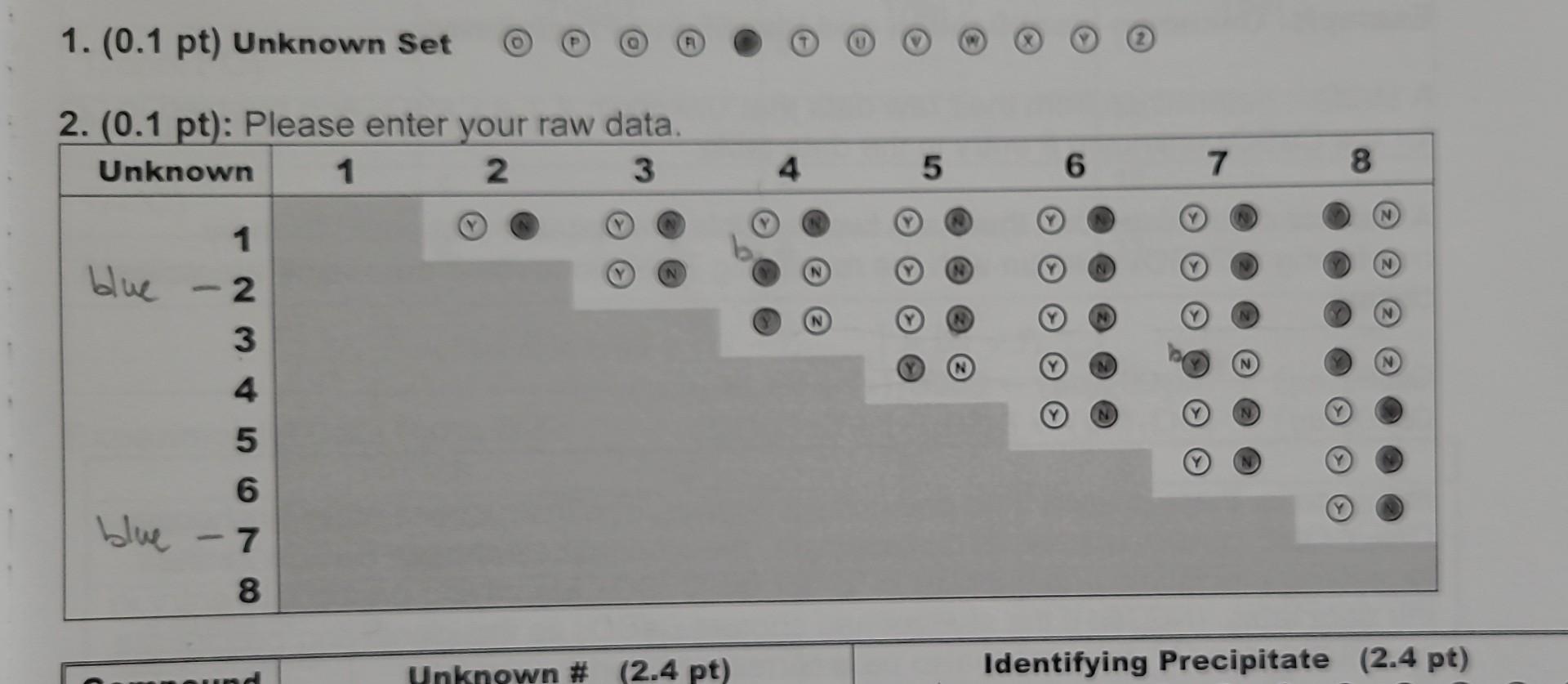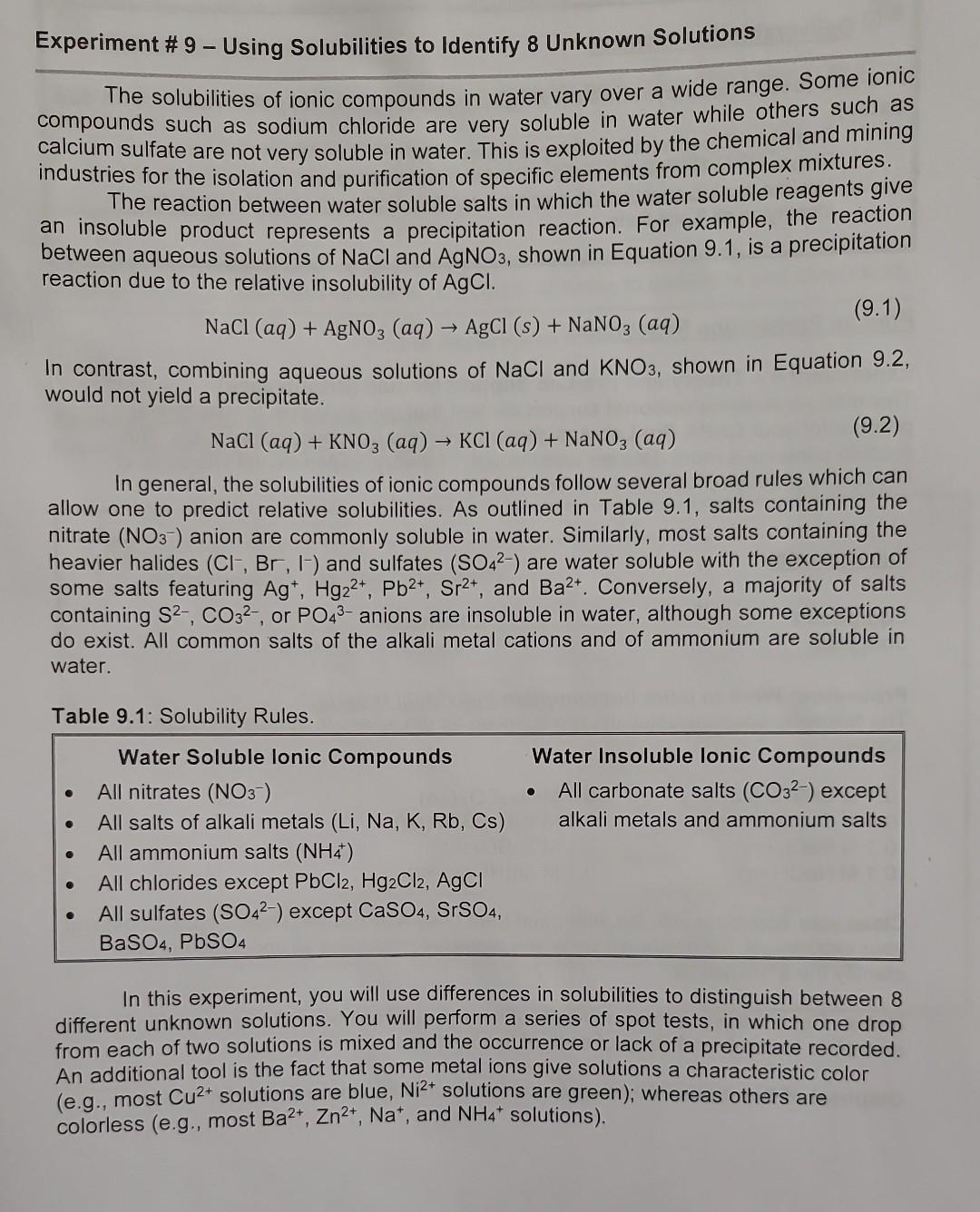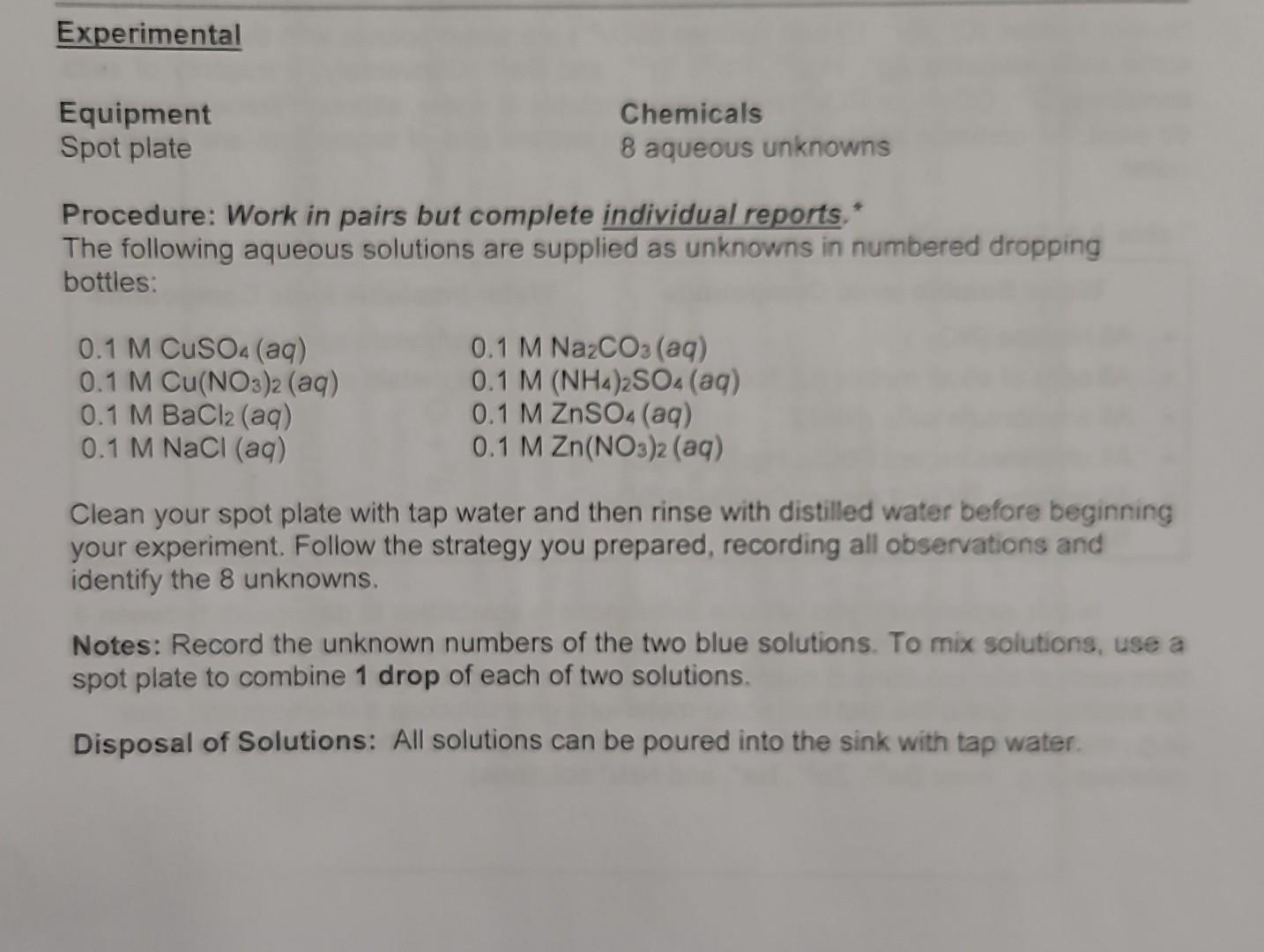Answered step by step
Verified Expert Solution
Question
1 Approved Answer
Unknowns 2 and 7 were already blue from the start of the experiment. others were just clear solutions. mixing 4 and 2 gave a blue
Unknowns 2 and 7 were already blue from the start of the experiment. others were just clear solutions. mixing 4 and 2 gave a blue precipitate and mixing 7 and 4 also gave a blue precipitate. all the other precipitates formed were white.




Identifying Precipitates A. CuCO3 D. NaNO3 G. ZnCO3 J. NaCl B. Na2SO4 E. BaSO4 H. NH4Cl K. No precipitate was formed C. CuCl2 F. ZnCl2 I. BaCO3 1. (0.1 pt) Unknown Set (-) (1) (a) (n) 2. (0.1pt) : Please enter your raw data. The solubilities of ionic compounds in water vary over a wide range. Some ionic compounds such as sodium chloride are very soluble in water while others such as calcium sulfate are not very soluble in water. This is exploited by the chemical and mining industries for the isolation and purification of specific elements from complex mixtures. The reaction between water soluble salts in which the water soluble reagents give an insoluble product represents a precipitation reaction. For example, the reaction between aqueous solutions of NaCl and AgNO3, shown in Equation 9.1, is a precipitation reaction due to the relative insolubility of AgCl. NaCl(aq)+AgNO3(aq)AgCl(s)+NaNO3(aq) In contrast, combining aqueous solutions of NaCl and KNO3, shown in Equation 9.2, would not yield a precipitate. NaCl(aq)+KNO3(aq)KCl(aq)+NaNO3(aq) In general, the solubilities of ionic compounds follow several broad rules which can allow one to predict relative solubilities. As outlined in Table 9.1, salts containing the nitrate (NO3) anion are commonly soluble in water. Similarly, most salts containing the heavier halides (Cl,Br1I)and sulfates (SO42) are water soluble with the exception of some salts featuring Ag+,Hg22+,Pb2+,Sr2+, and Ba2+. Conversely, a majority of salts containing S2,CO32, or PO43 anions are insoluble in water, although some exceptions do exist. All common salts of the alkali metal cations and of ammonium are soluble in water. In this experiment, you will use differences in solubilities to distinguish between 8 different unknown solutions. You will perform a series of spot tests, in which one drop from each of two solutions is mixed and the occurrence or lack of a precipitate recorded. An additional tool is the fact that some metal ions give solutions a characteristic color (e.g., most Cu2+ solutions are blue, Ni2+ solutions are green); whereas others are colorless (e.g., most Ba2+,Zn2+,Na+, and NH4+solutions). Procedure: Work in pairs but complete individual reports. The following aqueous solutions are supplied as unknowns in numbered dropping bottles: Clean your spot plate with tap water and then rinse with distilled water before beginning your experiment. Follow the strategy you prepared, recording all observations and identify the 8 unknowns. Notes: Record the unknown numbers of the two blue solutions. To mix solutions, use a spot plate to combine 1 drop of each of two solutions. Disposal of Solutions: All solutions can be poured into the sink with tap water
Step by Step Solution
There are 3 Steps involved in it
Step: 1

Get Instant Access to Expert-Tailored Solutions
See step-by-step solutions with expert insights and AI powered tools for academic success
Step: 2

Step: 3

Ace Your Homework with AI
Get the answers you need in no time with our AI-driven, step-by-step assistance
Get Started


